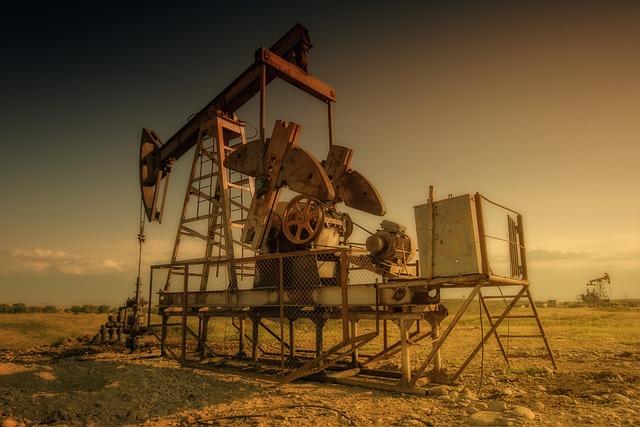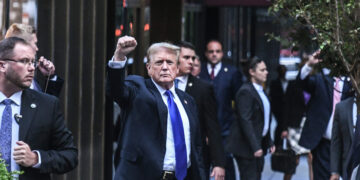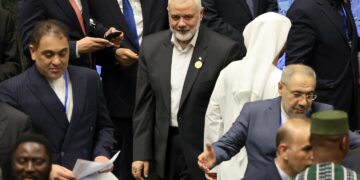As the global energy stage evolves, few nations embody the transformative potential of natural resources like Guyana. At the forefront of this paradigm shift is the 2025 CERAWeek, where industry leaders and policymakers converge to explore the multifaceted implications of oil and gas on economic resilience. Guyana’s President, with a keen eye on sustainable development, heralds a new era where robust energy revenues are not just fueling the nation’s economy, but also shaping a future defined by growth, innovation, and environmental stewardship. In an age where the balance between resource extraction and ecological responsibility is paramount, this article delves into the insights shared at CERAWeek 2025, highlighting how Guyana’s journey can serve as a blueprint for other resource-rich nations navigating similar paths.
The Economic Powerhouse: How Oil and Gas Revenues are Transforming Guyana

In the heart of South America, Guyana is undergoing a remarkable metamorphosis as the oil and gas sector emerges as a dominant force in its economy. With substantial offshore reserves, the nation is experiencing a surge in foreign investments, leading to unprecedented growth opportunities. This newfound wealth is transforming various sectors, creating jobs, enhancing infrastructure, and improving essential services for the populace. The strategic management of these revenues is fostering an economic landscape where sustainability and resilience take center stage.
The government’s focus on utilizing oil and gas revenues for national development is yielding tangible benefits. Through comprehensive policies, leaders are prioritizing critical areas such as:
- Education: Investment in quality education and vocational training programs ensures a well-equipped workforce.
- Healthcare: Increased funding for health services results in improved access and quality for the population.
- Infrastructure: Revamping transportation and utilities facilitates business operations and attracts further investment.
To illustrate the transformative impacts, consider the following table highlighting key developments fueled by oil and gas revenues:
| Sector | Impact | Investment ($ Millions) |
|---|---|---|
| Education | Scholarships and new schools | 150 |
| Healthcare | New hospitals and clinics | 200 |
| Infrastructure | Road and bridge construction | 300 |
As Guyana continues to navigate this critical juncture in its economic evolution, the challenge remains in ensuring that the wealth generated is equitably distributed among its citizens. By embracing transparency and accountability in the management of oil and gas revenues, the country is poised to not only enhance its economic prospects but also to set a precedent for resource-rich nations worldwide. With strategic foresight, Guyana is not just tapping into its natural resources; it is sculpting a resilient future for generations to come.
Insights from CERAWeek 2025: Navigating the Future of Energy Investments
During CERAWeek 2025, world leaders and industry experts gathered in Houston to discuss the shifting landscape of energy investments, highlighting the transformative role of oil and gas revenues. President of Guyana, Irfaan Ali, emphasized how the financial benefits from the country’s burgeoning oil sector are not merely enriching the national treasury but are also acting as a catalyst for broader economic resilience. With a vision to redirect profits into sustainable development, Guyana’s focus on responsible extraction and reinvestment sets a precedent for resource-rich nations worldwide.
Participants of the conference explored essential themes, including:
- Investment in Infrastructure: How oil revenues are being utilized to enhance public services and infrastructure.
- Renewable Energy Integration: Strategies to balance oil and gas operations with renewable initiatives.
- Regional Collaboration: Promoting partnerships among Caribbean nations for energy security and economic stability.
Furthermore, discussions underscored the importance of sustainable practices in oil extraction. Guyana’s approach serves as a blueprint for balancing economic growth with environmental stewardship. The country aims to commit a significant portion of its oil-generated wealth toward programs that foster education, healthcare, and infrastructural improvements, ultimately creating a virtuous cycle where both the economy and society thrive together.
Strategies for Sustainability: Balancing Economic Growth with Environmental Responsibility

In the discourse surrounding economic development and environmental stewardship, it has become increasingly clear that countries must find innovative ways to harness their natural resources while minimizing ecological impact. One approach emphasizes integrating renewable energy sources into the existing economic framework, allowing for a transition that not only promotes sustainability but also stimulates job creation. Governments can foster this shift by investing in technologies that enhance energy efficiency and reduce dependency on fossil fuels.
Furthermore, collaboration among stakeholders—including corporations, governments, non-profits, and local communities—is essential for successful implementation. Engaging diverse perspectives can lead to the establishment of best practices that balance the need for energy production and ecological preservation. For instance, utilizing corporate social responsibility programs can encourage oil and gas companies to invest in local environmental initiatives, thus ensuring that community well-being is prioritized alongside profit margins.
| Strategy | Description | Impact |
|---|---|---|
| Green Technology Investment | Support for innovations in renewable energy and resource management. | Reduces carbon footprint while generating economic opportunities. |
| Public-Private Partnerships | Collaboration between the public sector and businesses for sustainable projects. | Enhances resource allocation and shares best practices. |
| Community Engagement | Involving local communities in discussions about energy projects. | Builds trust and ensures that local needs are addressed. |
Recommendations for Policy Makers: Harnessing Oil Wealth for Long-Term National Development

To effectively channel the vast revenues generated from oil and gas, policy makers must establish a framework that ensures these resources contribute to sustainable economic growth. Critical elements of such a framework should include:
- Transparency and Accountability: Implement robust auditing systems to monitor revenue inflow and distribution, ensuring public trust and adherence to fiscal responsibility.
- Long-Term Investment Strategy: Allocate a portion of oil revenues towards infrastructure projects, education, and healthcare to foster diversified economic development and improve the overall quality of life.
- Public Engagement: Facilitate community consultations and participatory budgeting processes to align development initiatives with the needs and aspirations of local populations.
In addition to direct investment in social sectors, creating a stabilized sovereign wealth fund can serve as a financial hedge against market fluctuations. Such a fund would allow for:
| Goal | Benefit |
|---|---|
| Stabilization Purpose | Provide a buffer during economic downturns by distributing dividends during hard times. |
| Intergenerational Equity | Ensure future generations also reap the benefits of present oil wealth. |
| Investment Opportunities | Invest in sustainable projects and innovative industries to foster economic diversification. |
fostering partnerships with private sector entities and international organizations can amplify the impact of oil wealth on national development. By leveraging expertise and resources, policy makers can promote:
- Technology Transfer: Facilitate access to advanced technologies that enhance efficiency and sustainability in the oil and gas sector.
- Capacity Building: Invest in training programs to equip the local workforce with the necessary skills to thrive in a burgeoning energy economy.
- Research and Innovation: Encourage collaborative research initiatives aimed at optimizing resource extraction methods while minimizing environmental impact.
Wrapping Up
As we wrap up our exploration of CERAWeek 2025, where discussions on the intricate balance between energy production and economic resilience took center stage, it becomes evident that the future of oil and gas is not merely about extraction, but about cultivation—cultivation of economies, partnerships, and sustainable practices. Guyana’s President underscored the transformative potential of oil and gas revenues, showcasing a model wherein resources are harnessed not just for short-term gain, but also for long-term prosperity.
As nations converge to share insights and strategies, the continued dialogue surrounding energy transition and innovation is crucial. The challenges are significant, but so too are the opportunities to innovate and evolve. As we look ahead, the message seems clear: a resilient economy is not just fuelled by resources but is crafted through intelligent stewardship and collective foresight.
The discussions ignited at CERAWeek 2025 will resonate beyond the confines of this conference, shaping policies and fostering innovations that can propel the oil and gas industry into a new era—one that harmonizes economic growth with environmental stewardship, ensuring that as we move forward, no nation is left behind. In this era of transformation, we are reminded that it is not just about what we extract, but how we build a sustainable future for generations to come.































